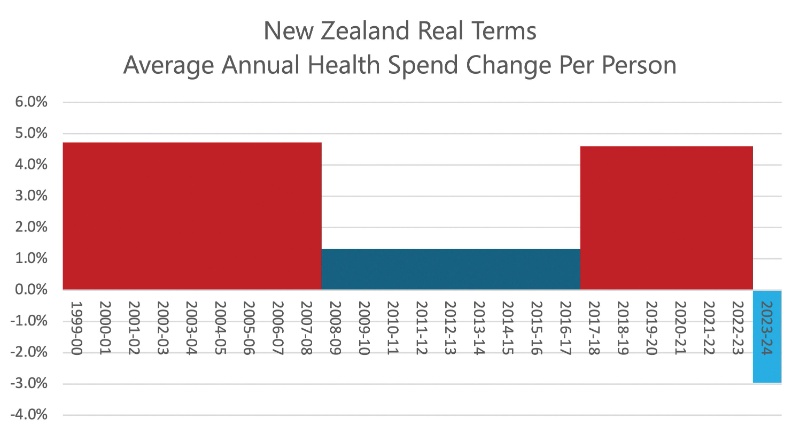Independent Review Aims To Bolster Protection Of Te Waikoropupū Springs
Tasman District Council (TDC) commissioned an independent peer review of the monitoring programs associated with Te Waikoropupū Springs (TWS), responding to recommendations from the Environment Court following the establishment of a Water Conservation Order (WCO) for the Springs in October 2023.
Murray Close, a Senior Science Leader at the Institute of Environmental Science and Research (ESR), was engaged in July 20204 to conduct the review.
The review assessed current groundwater and surface water monitoring efforts within the Wharepapa Arthur Marble Aquifer (WAMA) recharge area with the goal of enhanced monitoring to provide early warnings of water quality changes that could impact the exceptional clarity and ecological values of the Springs.
Review recommends TDC as monitoring authority
The peer reviewer considers the TDC as the agency with responsibility for implementing the WCO and the responsible statutory body and, as such should be responsible for conducting the monitoring programme.
Historical monitoring
The review highlighted the long-term monitoring of the Te Waikoropupū Main Spring, with data spanning from the 1970s to the present.
It addressed inconsistencies in analytical methods used for nitrate testing over the years by the different laboratories. The study found that the Cadmium reduction method for low levels of Nitrate by Hills laboratories showed no significance difference from the GNS low level Ion Chromatography (IC) method. Earlier testing by GNS prior 2018 used the regular IC method. The study also found that the Hills IC method showed significant differences from its cadmium reduction method.
Since 2018 the Main Spring and other sites have been tested with methods showing no statistically significant difference. The report emphasizes the importance of consistent and reliable data collection for effective management decisions.
A key focus of the review - future monitoring program
Defining the goals of a future monitoring program and aligning with the Environment Court's directives.
These goals include ensuring compliance with court-ordered monitoring, providing early warnings of water quality changes, and ensuring the reliability of monitoring results.
The program aims to generate high-quality water quality data from key land uses within the recharge area to better inform and optimize future water quality models.
The proposed future monitoring program includes fifteen monitoring sites, including:
- The
three spring sites around TWS (TWS Main Spring, Fish Creek
Spring TDC site
Fish Creek Site WCO site) - Three river sites (Tākaka River at Harwoods, Tākaka River at Lindsays Bridge, Waingaro River at Hanging Rock)
- Two creeks sampled via water supply taps that flow from the eastern upland marble (Gorge Creek, Ironstone Creek)
- Two wells in the Wharepapa Arthur Marble
Aquifer, four wells in the Tākaka Gravel Aquifer, and one
well in the Tākaka Limestone
Aquifer
All sites except the three springs sites within TWS are in the recharge area.
Sites were chosen based on accessibility, the ability to collect reproducible samples, year-round availability, and a clear understanding of the water source.
An initial sampling round will analyse a comprehensive suite of physical and chemical parameters, followed by monthly monitoring of a reduced parameter set relevant to TWS management.
The intensive sampling frequency would be monthly for one year and then a review would be conducted on the first year of monitoring results to determine sampling frequency thereafter for each site and to refine the parameter list if necessary.
The findings and recommendations from the independent peer review will inform the design and implementation of an enhanced monitoring program.
This program will play a crucial role in safeguarding the long-term health and preservation of Te Waikoropupū Springs, ensuring the protection of this Water of National Importance for future generations.


 Gordon Campbell: On The Americanising Of NZ’s Public Health System
Gordon Campbell: On The Americanising Of NZ’s Public Health System New Zealand Deerstalkers Association: NZDA Urges Hunters To Prioritise Safety This Roar Season
New Zealand Deerstalkers Association: NZDA Urges Hunters To Prioritise Safety This Roar Season PSA: 1000 Days Since Landmark Pay Equity Deal Expired - Workers Losing $145 A Week
PSA: 1000 Days Since Landmark Pay Equity Deal Expired - Workers Losing $145 A Week Grace Tinetali-Fiavaai, RNZ: Widow Of Fa'anānā Efeso Collins Seeks Inquiry Into His Death - 'Unanswered Questions'
Grace Tinetali-Fiavaai, RNZ: Widow Of Fa'anānā Efeso Collins Seeks Inquiry Into His Death - 'Unanswered Questions' Te Pāti Māori: Te Pāti Māori Call For Mandatory Police Body Cameras
Te Pāti Māori: Te Pāti Māori Call For Mandatory Police Body Cameras NZ First Party: NZ First Introduces the “Conscience Acts Referendums Bill”
NZ First Party: NZ First Introduces the “Conscience Acts Referendums Bill” NZ Government: Unlocking Data To Increase Competition And Choice
NZ Government: Unlocking Data To Increase Competition And Choice


